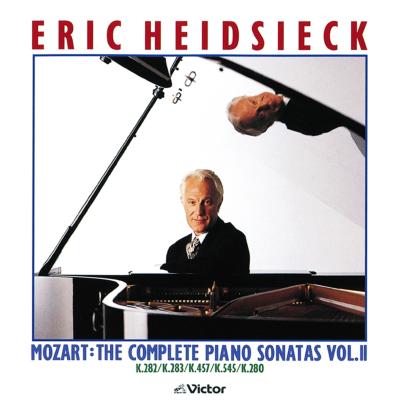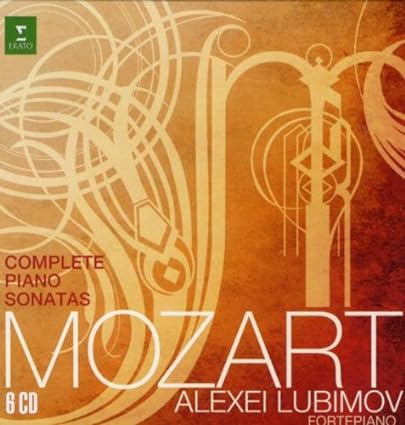You are using an out of date browser. It may not display this or other websites correctly.
You should upgrade or use an alternative browser.
You should upgrade or use an alternative browser.
Collection Listening Log
- Thread starter Todd A
- Start date
Todd A
pfm Member

Alicia de Larrocha's style. With the mikes picking up some breathing and vocalizing, Larrocha opens the Adagio at a lovely tempo that is neither too fast nor too slow. Her touch is subtle. Her tone is lovely, with a few tinges of attractive brightness. Her ornamentation is eminently tasteful, which ends up being the best overall word to describe the sonata. The minuets are likewise played with the same combination of traits, with well judged rhythmic sense tossed in, though one may (or may not) want more pronounced left hand playing. The Allegro is light and elegant and quite lovely.
This site contains affiliate links for which pink fish media may be compensated.
Todd A
pfm Member

When a sonata cycle is squeezed onto four discs, that means some repeats are omitted, as is the case in the Adagio here. Klien plays what is there at a slow tempo, but the playing flows marvelously, and the ornamentation is the height of tastefulness. Some of the pedaling might not always be, but that's OK. The minuets are quicker than many, with an insistent but not pushy rhythm, and more lovely playing. The stripped down Allegro is fast, with impressively nimble fingerwork, bouyant rhythm, and a sense of fun. The too close, not quite right sound is less than ideal, but that matters not a whit. Every time I play any of Walter Klien's Mozart, he reinforces his stature in this repertoire.
This site contains affiliate links for which pink fish media may be compensated.
Todd A
pfm Member

Eric Heidsieck is one of my favorite pianists, and I do enjoy his Mozart rather a lot, but his playing is not for those who want a straight-forward set. He starts off with an Adagio of 8'15" and starts using hefty amounts of rubato essentially right away. He seems to alter tempo and dynamics with each phrase. Sometimes, he slows the playing way, way down, to the point one might think it might break the line, then he'll play a long trill that accelerates as he plays it, transition to romantic and accented playing thereafter, and then go back and do it again, just differently. And he does it the whole time. Yet the interventions pretty much never sound labored or focused on bringing attention to the pianist just for attention. He seems dead serious that this is how the music should go. The minuets, with slightly more forceful playing, stronger accenting, even more dramatic dynamic shifts, and more hefty rubato, offer a nice contrast to the opening material, all the more so in the second minuet, which has some notably faster playing. In the Allegro, Heidsieck speeds his playing way up, most of the time, though he often follows scampering playing with uncommonly slow playing for brief passages. There's a topsy-turvy feel to it that works quite well, and some of the playing veers on the aggressive. Recorded sound is slightly resonant, bright, and metallic, which suits Heidsieck's playing just fine.
Todd A
pfm Member

Time for everybody's favorite pervy/martyr-y (depending on taste) Mozartian, Siegfried Mauser. He starts the Adagio of K282 very slowly, and he continues a slow overall pulse. He keeps the timing to 6'09" by way of not playing all repeats. His very slow playing and the clean, dry recording make for a forensic sound, and one that is too cold to be romantic and too heavy to be classical. It's analytical, where even ornaments are deliberate and measured. That's not to say the playing doesn't appeal, because it does. It's like a heavier but less extreme version of the hyper-detailed, hyper-analytical style used by Gianluca Cascioli in his Mozart sonata disc, though the Italian hasn't recorded this sonata. Mauser plays the minuets slower than normal, and they are likewise somewhat heavy, and the focus is on detail rather than flow, with personal rubato and accenting peppered throughout. It's not as musically satisfying as some other versions, in a standard sense, but the playing demands absolute attention. Mauser then plays a stripped down Allegro in a more straight forward manner than the preceding movements, though he still relies on heavy accenting and rubato not a little. This is idiosyncratic, "intellectual" Mozart that likely won't be for everyone.
This site contains affiliate links for which pink fish media may be compensated.
Todd A
pfm Member

Michael Endres starts with an Adagio played at a slightly quicker than average tempo, though it's not fast, and it does not observe all repeats, coming in at 4'47". What Endres does sounds nearly perfect in terms of ornamentation and dynamics, with nothing done to excess, and his rhythmic sense is pleasant. The minuets are an the taut side, but again nothing is pushed too much, and his clarity of voices is very fine, indeed. The Allegro is just splendid, with incredible clarity allowing one to go back and forth between the meticulously played bass line and the delightful and energetic melody. Endres does not play in a gentle, precious demeanor at all, but he again avoids overdoing anything. This is less dainty, and more robust, but still classical Mozart. It's been a while since I listened to the whole cycle. I should probably rectify that.
This site contains affiliate links for which pink fish media may be compensated.
Todd A
pfm Member

Now I've arrived at the last three physical recordings in my collection, which was sort of the point. These three are all quite new, and I wanted to hear how they stack up to some recordings I've owned for a while. Fazil Say is first. He plays the Adagio at a leisurely pace, but one that still sounds forward moving, and being a most decidedly willful pianist, he doesn't wait long to introduce personal touches like foreshortened trills, or dynamically varied trills, and robust, but effective, rubato. (And vocalizing, lots of vocalizing.) In the first minuet, Say sort of explodes out of the gate, but he ends up never playing too fast, and there's a sense of playfulness. There's even more in the second minuet, and the return of the opening material is speedy and exaggerated a bit for effect. Say then plays the Allegro in a fairly straight-forward manner, with hefty dynamic contrasts and accenting his main personal touches. Say's Mozart is definitely not run of the mill, though it may be too interventionist for some. The sonics certainly cannot be faulted.
This site contains affiliate links for which pink fish media may be compensated.
Todd A
pfm Member

Roberto Prosseda starts K282 with a slow, flowing Adagio characterized by an almost unmatched tonal gorgeousness, a sense of playfulness, and almost tenderness. And super-liberal ornamentation. His rubato cannot be called conservative, either. The music almost sounds like a transcribed song in places. The same traits, just sped up, are there in the minuets. Prosseda's penchant for ornamentation here is unlike any preceding version, and it could be considered less appropriate, though I dig it. The Allegro is high energy and playful, with perfectly meted out rubato. So, an interventionist recording of no little distinction. Sound of the Vallotti unequal temperament tuned Fazioli is perfect in every regard.
This site contains affiliate links for which pink fish media may be compensated.
Todd A
pfm Member

I'm ending the K282 survey with Michail Lifits. The previous two versions, by Say and Prosseda, boasted beautiful tone from the pianists. Mr Lifits shows them what for. Slow in delivery, with more subtle ornamentation than the preceding two, but more so than some others, Lifits delivers playing of almost superhuman beauty. His dynamic gradations are super-fine, and his ability to play a slow trill or insert the micro-est of micro-pauses in some arpeggios is stupefying. It is of course possible, or even probable, that some listeners would find the playing way too precious, but if a pianist is going to do it, they ought to strive to do it this well. The minuets are likewise a bit slow and display super-fine pianism in every area. Lifits opts for a stripped down Allegro, and his tempo is a bit speedier, but he never sounds like he's in a hurry, instead lavishing attention on each note and phrase and interpretive device. The survey contains playing from some supervirtuosi, but none display finer playing than Lifits. His other recordings reinforce his world-class chops. Bring on that Prokofiev disc!
Top tier (in alphabetical order)
Dumont
Endres
Francois
Lifits
Pires (Denon)
Prosseda
Zacharias
Super-romantic alternative
Arrau
Others of no little distinction (in alphabetical order)
Barenboim
Batik
Gulda
Nakamichi
Richter
Say
Schiff
This site contains affiliate links for which pink fish media may be compensated.


